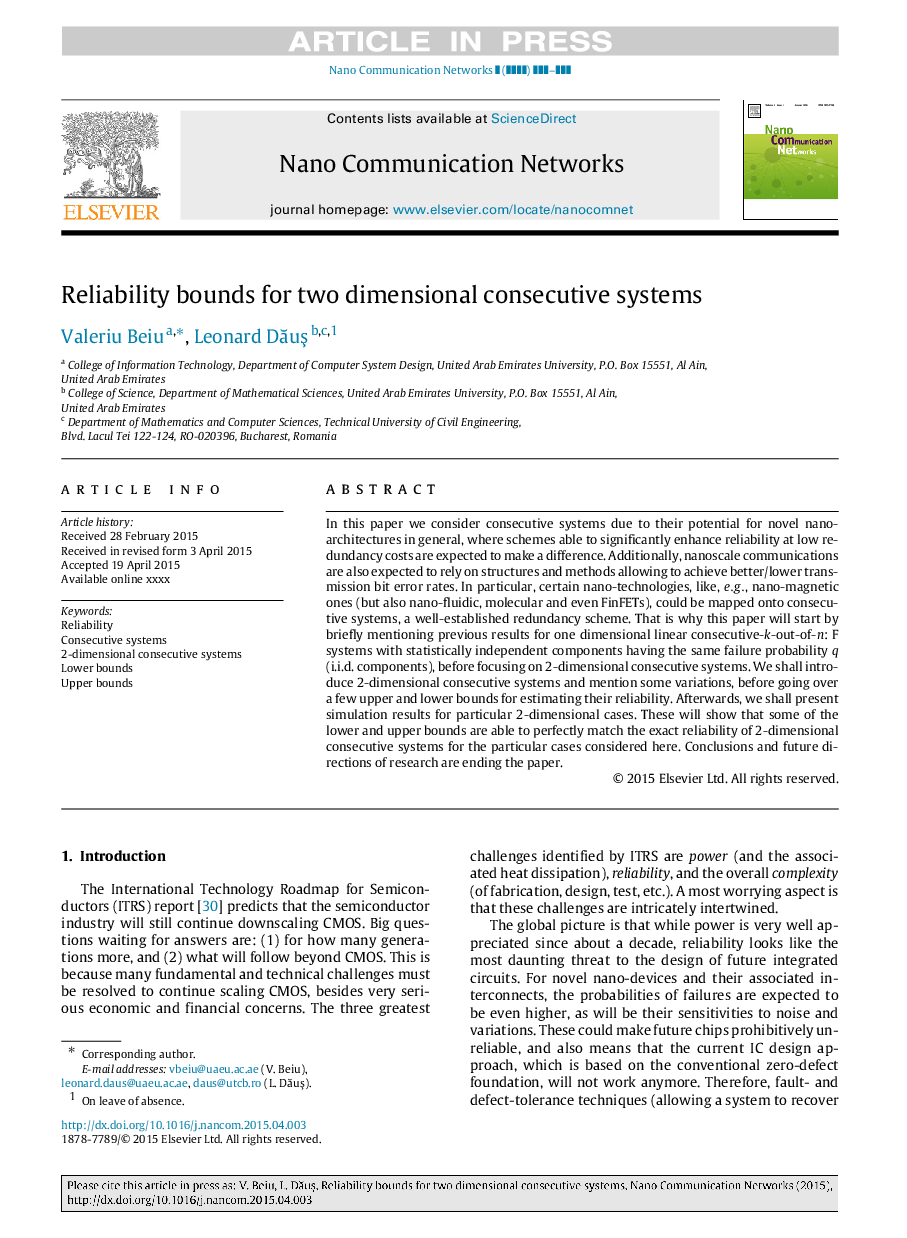| Article ID | Journal | Published Year | Pages | File Type |
|---|---|---|---|---|
| 10343468 | Nano Communication Networks | 2015 | 8 Pages |
Abstract
In this paper we consider consecutive systems due to their potential for novel nano-architectures in general, where schemes able to significantly enhance reliability at low redundancy costs are expected to make a difference. Additionally, nanoscale communications are also expected to rely on structures and methods allowing to achieve better/lower transmission bit error rates. In particular, certain nano-technologies, like, e.g., nano-magnetic ones (but also nano-fluidic, molecular and even FinFETs), could be mapped onto consecutive systems, a well-established redundancy scheme. That is why this paper will start by briefly mentioning previous results for one dimensional linear consecutive-k-out-of-n: F systems with statistically independent components having the same failure probability q (i.i.d. components), before focusing on 2-dimensional consecutive systems. We shall introduce 2-dimensional consecutive systems and mention some variations, before going over a few upper and lower bounds for estimating their reliability. Afterwards, we shall present simulation results for particular 2-dimensional cases. These will show that some of the lower and upper bounds are able to perfectly match the exact reliability of 2-dimensional consecutive systems for the particular cases considered here. Conclusions and future directions of research are ending the paper.
Keywords
Related Topics
Physical Sciences and Engineering
Computer Science
Computer Networks and Communications
Authors
Valeriu Beiu, Leonard DÄuÅ,
